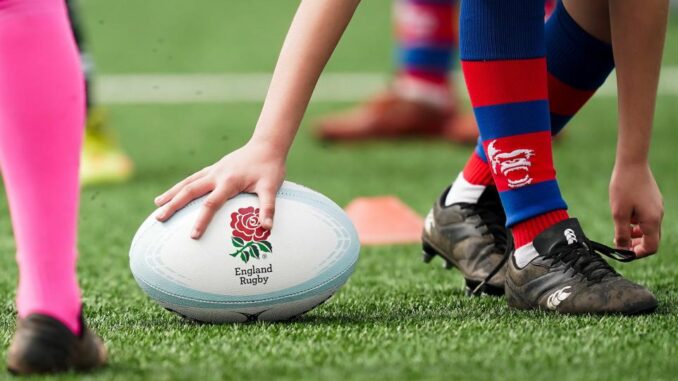

Introduction: The Rise of Women’s Rugby
In recent years, women’s rugby has skyrocketed in popularity, gaining attention on global stages and attracting more fans, players, and sponsors than ever before. Women’s Rugby Union is quickly becoming one of the fastest-growing sports worldwide. In this post, we explore the factors behind this rise, key milestones, and what the future holds for women’s rugby.
1. The Growing Popularity of Women’s Rugby Union
Expanding International Reach
Women’s rugby has seen rapid growth in several countries, with both participation and fan base expanding. Traditional rugby powerhouses like New Zealand, England, and France have long had strong women’s teams, but now countries such as the United States, Japan, and Canada are also producing top-tier female rugby players.
Increased Media Coverage
One of the driving forces behind the surge in popularity is increased media exposure. Major tournaments like the Women’s Rugby World Cup now get more broadcast coverage, allowing a wider audience to witness the incredible talent and skill of female athletes. Additionally, social media platforms have provided players with a space to showcase their skills, further connecting them with fans worldwide.
2. Milestones in Women’s Rugby Union
The Women’s Rugby World Cup: A Global Stage
The Women’s Rugby World Cup has grown significantly since its inception in 1991. With the increasing level of competition, the tournament has evolved into one of the biggest events in women’s sports. New Zealand, England, and France have been the dominant forces in the competition, but other nations are beginning to close the gap, making the tournament more unpredictable and exciting.
Professional Leagues and Contracts
The past decade has seen the establishment of professional leagues dedicated to women’s rugby, including the Premier 15s in England and Super W in Australia. These leagues have helped raise the standard of play by providing women with the opportunity to train full-time and compete at the highest level. As a result, more players are being offered contracts, creating a pathway for the next generation of rugby stars.
Rugby Sevens: A Launchpad for Women’s Rugby
Rugby Sevens has played a crucial role in increasing the visibility of women’s rugby. With the inclusion of Rugby Sevens in the Olympics starting in 2016, more attention has been placed on the women’s version of the game. Olympic success has opened the door for further growth in both the Sevens and 15s versions of the sport.
3. Challenges Faced by Women’s Rugby Union
Funding and Resources
Despite the growth, women’s rugby still faces challenges, particularly around funding and resources. While the men’s game often enjoys large sponsorships and media deals, women’s rugby continues to struggle for equal financial backing. This inequality impacts the development of the game, from grassroots initiatives to elite-level competitions.
Gender Inequality in Sport
Although progress is being made, gender inequality remains a significant challenge in women’s rugby. While more opportunities are emerging, many women still face barriers when it comes to pay, visibility, and support compared to their male counterparts. Bridging this gap will be critical to ensuring long-term success and sustainability in the sport.
4. The Impact of Women’s Rugby on Society
Promoting Gender Equality
Women’s rugby is contributing to the broader movement of gender equality in sports. As more women break through in traditionally male-dominated sports, they are inspiring future generations of girls to pursue rugby and other athletic endeavors. Female athletes are not just showing off their skills; they’re also breaking down barriers and challenging stereotypes about women in sports.
Encouraging Healthy, Active Lifestyles
Women’s rugby promotes physical fitness, teamwork, and leadership. By providing an outlet for women to compete and stay active, rugby is encouraging healthier lifestyles. The sport fosters qualities such as resilience, determination, and self-confidence, which translate to success on and off the field.
5. Key Players Shaping Women’s Rugby
Portia Woodman: A Global Icon
Portia Woodman, an outstanding wing for New Zealand, has become one of the most recognized faces in women’s rugby. Her explosive speed and skill in the Rugby Sevens have earned her international acclaim, and she continues to inspire young athletes around the world.
Sarah Hunter: England’s Captain
As the captain of the England Women’s Rugby team, Sarah Hunter is one of the leading figures in the sport. Known for her leadership on and off the pitch, Hunter has helped elevate the women’s game, leading her team to victories in the Women’s Six Nations and World Cup competitions.
Fiao’o Fa’amausili: A True Leader
Fiao’o Fa’amausili, the former captain of New Zealand’s Black Ferns, is another figurehead of women’s rugby. Under her leadership, the Black Ferns became one of the most dominant forces in the history of the sport. Fa’amausili has used her platform to advocate for women’s sport and inspire the next generation of rugby players.
6. The Future of Women’s Rugby Union
Increased Investment and Sponsorship
The future of women’s rugby looks bright with increased investment and sponsorship deals on the horizon. As the sport continues to grow in popularity, brands are beginning to recognize the value in supporting women’s rugby. More financial backing will lead to enhanced opportunities, better facilities, and the professionalization of leagues and players.
More International Competitions
In the next decade, expect to see more international tournaments and high-profile competitions dedicated to women’s rugby. With the continued success of the Women’s Rugby World Cup, there will be even more focus on creating additional global competitions to provide women with more opportunities to showcase their talent.
Improved Pathways for Players
A key focus will be the development of pathways for young girls to enter the sport. From school-level competitions to professional clubs, the goal is to ensure that every aspiring rugby player has the resources and support to reach the highest levels of competition. Rugby academies and youth programs will continue to play a pivotal role in growing the talent pool.
Conclusion: A Bright Future for Women’s Rugby Union
Women’s Rugby Union is undeniably on an upward trajectory, and the next decade promises even greater growth and recognition. With increasing media coverage, professional opportunities, and passionate athletes, women’s rugby is poised to become one of the most prominent sports worldwide. As more people continue to embrace the game, there’s no doubt that we’ll witness even more groundbreaking achievements in the years to come.
Call to Action: Support Women’s Rugby
Are you excited about the rise of women’s rugby? Share your thoughts in the comments below and tell us who your favorite female rugby player is. Let’s continue supporting and celebrating women’s rugby as it continues to grow and inspire athletes everywhere!


Leave a Reply